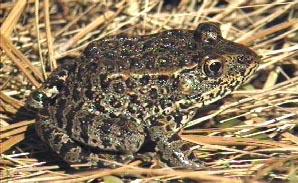Kudzu
Scientific name
Pueraria Montana.
Conservation Status
Invasive (Invasive Plants 97).
Appearance
Kudzu is a climber with large, compound deciduous leaves. Leaves consist of three wide leaflets, each of which is divided into two or three lobes.
Natural History and Ecology
Kudzu was introduced from Asia in 1876 for fodder and prevention of soil erosion. Kudzu proliferates mainly through rhizomes, runners, and developing vine nodes, expanding as much as a foot per day.
Ecosystem-level Relationships
Due to its rapid growth, Kudzu stifles slower developing plants and bands tree trunks, thereby restricting their growth. It destroys shrubs and trees by breaking or toppling entire plants through the might of its weight.
Impacts of Changing Florida Landscape
Climatically, Florida is ideally suited to Kudzu’s requirements It flourishes in warm climatic zones, where summer temperatures exceed 80°F, winters are temperate, and rainfall is fairly high. It favors areas with ample sunlight and thrives in almost any type of soil.
Management

Kudzu’s extensive root system has to be demolished to ensure permanent eradication. Vines are cut at ground level and reoccurring sprouts are cut monthly. Systemic herbicides are applied to infiltrate the root system. Soil-active herbicides also produce satisfactory results.
Gopher frog
Scientific name
Rana capito (Doubledee 2003)
Conservation Status
Threatened (Florida and Alabama)
Appearance
Rana capito capito (Florida gopher frogs) is between 2.5 and 3.5 inches long. Their colors vary from gray to brown, with darker markings and they always have warts. Males may be identified by yellow markings on their back ridges, maxilla, axilla, and groin. Females have extended snout-vents.
Natural History and Ecology
Gopher frogs breed ponds with vegetation but no fish. Tadpoles hatch between May and July, and mature in about 210 days. They are mainly active at night when they consume insects and other frogs.
Ecosystem-level Relationships
The gopher frog lives commensally with the gopher tortoise. Threats to the gopher tortoise’s habitat have a serious impact on the gopher frog population.
Impacts of Changing Florida Landscape
Fire control has allowed invasive hardwood plants to encroach on the gopher tortoise’s favored wiregrass and softwood plants, driving the tortoises away and endangering gopher frogs. Increased human activity also reduces gopher frog territory. They are also threatened by the introduction of fish. (Miller)
Management
Preservation of habitat of both the gopher frog and gopher tortoise, and controlled burning to simulate natural fires, will have to be applied to save the gopher frog from extinction.

Works Cited
Doubledee, Rebecca 2003 Ed.
Whittaker, Kellie. 2007, Amphibiaweb “Rana capito”. Web.
Miller, James H. Florida Department of Agriculture and Consumer Services 2012, “0212-pueraria-montana-habit”. Web.